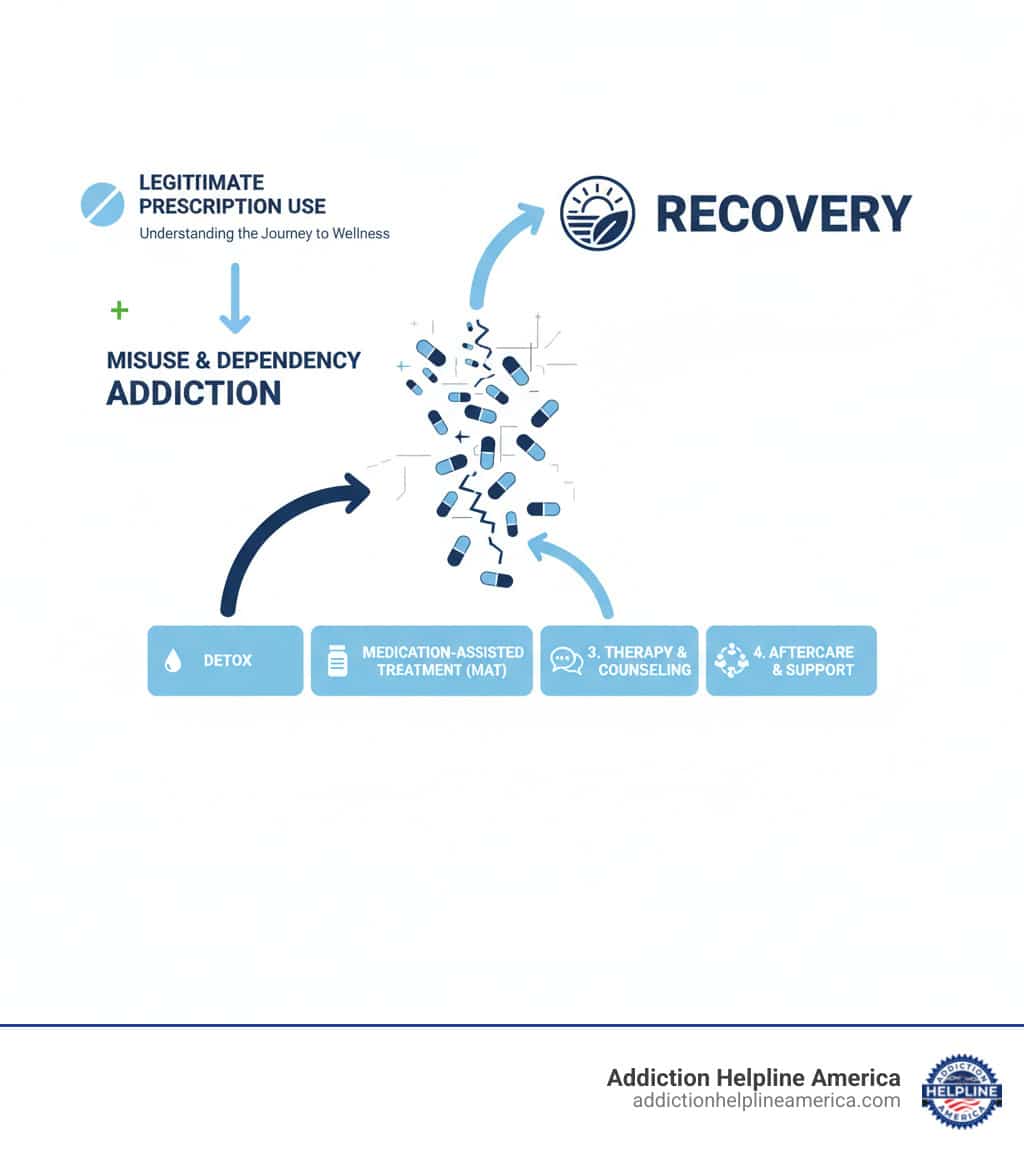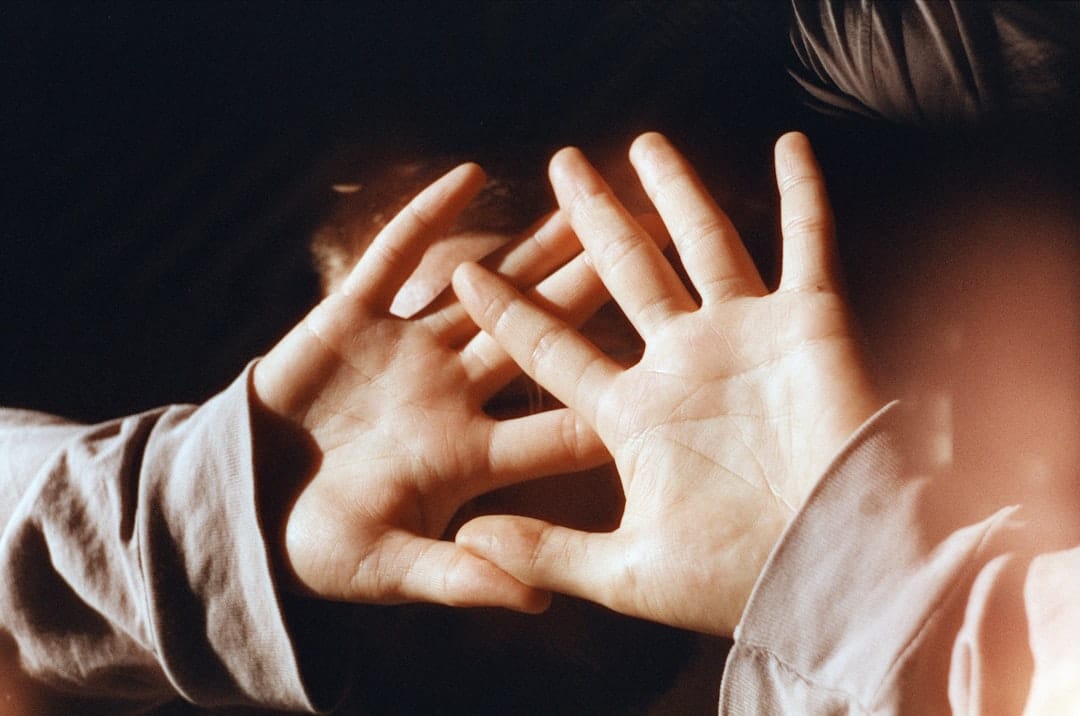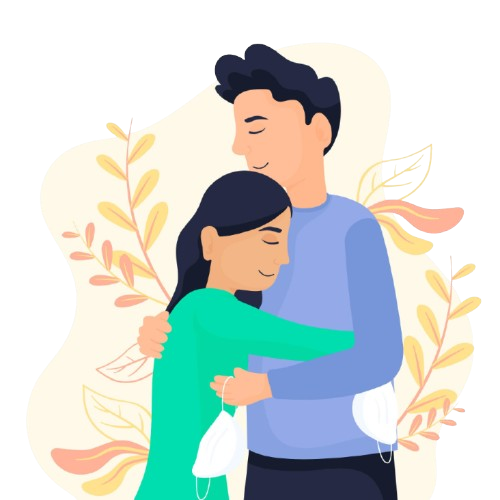Your Journey to a Healthier Life Starts Here
Free Insurance Verification
Verify Your Treatment Coverage
Verify Your Treatment Coverage
Struggling with prescription drug misuse? Prescription Drugs Treatment offers a path to recovery. Here’s what you need to know about your options:
Key Treatment Options Available:
Opioid painkillers, benzodiazepines, and stimulants help millions manage health conditions. But misuse—taking higher doses, using someone else’s prescription, or using them to get high—can have devastating consequences.
The numbers are stark. In Canada, about 22% of people over 15 use psychoactive prescription drugs, with 7% reporting problematic use. In the U.S., over 16 million Americans misused prescription medications in 2020 alone.
It’s crucial to know that physical dependence is not the same as addiction. Dependence can occur even with prescribed use, while addiction involves compulsive drug-seeking despite negative consequences. Both require professional help.
The most important truth is that recovery is possible. Effective, evidence-based treatments exist. Help is available—and it works.
At Addiction Helpline America, we guide individuals and families through the journey of Prescription Drugs Treatment. We connect you with the right resources and support systems for lasting recovery. We understand the fear and confusion of addiction and provide clear, compassionate guidance.


The path from legitimate medical use to needing Prescription Drugs Treatment often begins innocently. Use can shift from following directions to taking an extra pill for unbearable pain or to escape difficult emotions. Soon, the drug becomes a way to cope with life, often fueled by underlying anxiety or depression.
It’s vital to understand that physical dependence and addiction are not the same. Physical dependence means your body has adapted to a drug and will experience withdrawal if you stop suddenly, even if you took it as prescribed. Addiction is a brain disease characterized by compulsive drug use despite harmful consequences, like lying or stealing to get more. While often linked, you can have one without the other.
Several factors increase vulnerability. Genetics plays a powerful role, as does your environment (easy access to drugs, social circles, chronic stress). Managing chronic pain also increases risk due to prolonged exposure. Experiencing a “high” from a medication is a red flag, as is using drugs to self-medicate underlying depression or anxiety.

Take the first step towards a healthier life! Call now to connect with our compassionate team and start your recovery journey today. Your path to healing awaits!
Our recovery specialists are available 24/7 to provide support, and all calls are confidential and free. Reach out anytime – we’re here to help!
Three categories of prescription medications account for the vast majority of misuse cases.
| Drug Category | Examples | Primary Medical Use | Effects of Misuse/Abuse | Risks of Abuse |
|---|---|---|---|---|
| Opioids | Fentanyl, Oxycodone, Hydrocodone, Methadone | Pain relief, cough suppression | Euphoria, pain relief, drowsiness, slowed breathing | Severe respiratory depression, overdose, constipation, confusion, poor coordination, increased pain sensitivity |
| CNS Depressants | Benzodiazepine (Xanax, Valium), Sedatives, Tranquilizers, Sleep Medications | Anxiety, panic attacks, sleep disorders | Drowsiness, slurred speech, impaired coordination, memory problems | Respiratory depression, slowed heart rate, seizures (during withdrawal), slurred speech, unsteady gait, memory problems |
| Stimulants | Adderall, Ritalin | ADHD, narcolepsy | Increased alertness, euphoria, reduced appetite, insomnia | Irregular heartbeat, high blood pressure, high body temperature, agitation, anxiety, paranoia, psychosis |
Opioids (fentanyl, oxycodone) are prescribed for pain but are highly addictive due to the euphoria they produce. They slow breathing, and high doses can be fatal.
Central nervous system (CNS) depressants like benzodiazepines (Xanax, Valium) treat anxiety and sleep issues. Misuse can cause dangerous sedation, memory loss, and life-threatening withdrawal seizures.
Stimulants (Adderall, Ritalin) are used for ADHD but are misused for alertness and energy. Abuse can lead to paranoia, anxiety, and serious heart problems.
Recognizing dependency early can save a life. The signs appear in behavior, physical health, and emotional well-being.
These signs are medical symptoms of a treatable condition. For more information, visit our page on Addiction Types.
The stakes with prescription drug abuse couldn’t be higher.
These complications don’t have to be permanent. With proper Prescription Drugs Treatment, people recover every day. Explore our resources on Harm Prevention and the National Institute on Drug Abuse’s scientific research on prescription drug misuse to learn more.
Starting Prescription Drugs Treatment is a brave decision, and you don’t have to do it alone. The first step is acknowledging the need for help. Addiction is a medical condition, not a moral failing, and it requires professional treatment to heal.
When you seek help, you’ll undergo a thorough, non-judgmental assessment. This helps create an individualized treatment plan custom to your unique situation. Our First Steps to Recovery page walks you through what to expect. We connect people to a nationwide network of Addiction Treatment Centers that offer personalized care.
For most, treatment begins with detoxification (detox), the process of safely clearing drugs from your system. Stopping opioids or benzodiazepines suddenly can be dangerous, making medical supervision critical. Healthcare providers monitor vital signs and manage withdrawal symptoms to keep you safe and comfortable.
Detox varies by drug. For opioids, medications like clonidine can manage withdrawal symptoms. Benzodiazepine withdrawal is especially dangerous and requires a medically supervised tapering schedule to prevent seizures. For stimulants, there are no specific withdrawal medications, but teams can help manage symptoms like depression and exhaustion.
An inpatient setting often provides the safest environment for detox. Our Drug Rehab Inpatient Near Me resource can help you find facilities. You can also learn more about opioid withdrawal in our guide on Heroin Withdrawal Symptoms Timeline & Detox for Heroin.
After detox, Medication-Assisted Treatment (MAT) is often the next step. MAT combines FDA-approved medications with counseling. It’s highly effective because it addresses the physical side of addiction by normalizing brain chemistry, reducing cravings, and preventing relapse. This allows you to focus on the psychological aspects of recovery in therapy.
For opioid addiction, three main medications are used:
For benzodiazepine dependency, MAT involves a gradual taper. For stimulant addiction, treatment focuses on behavioral therapies, as there are no FDA-approved medications yet. The Substance Abuse and Mental Health Services Administration (SAMHSA) provides comprehensive Information about Medication-Assisted Treatment (MAT).
Medication is helpful, but lasting recovery requires combining it with counseling and therapy to address the root causes of addiction.

Therapy helps you develop healthier coping skills, identify triggers, and rebuild damaged relationships. Key approaches include:
Long-Term Behavioral Health Facilities integrate these therapies into comprehensive care plans.
Recovery from prescription drug addiction is a lifelong journey, not a finish line. The real work begins after a formal treatment program ends. A strong support system of family, friends, and peers is the foundation of lasting recovery; trying to go it alone is a common mistake.
Many individuals find that extended care provides the structure they need. Our Long-Term Rehab Centers offer environments where you can continue strengthening your recovery skills.
Aftercare is your roadmap and safety net after completing a formal Prescription Drugs Treatment program. These ongoing strategies help you steer daily challenges without relapsing.


Take the first step towards a healthier life! Call now to connect with our compassionate team and start your recovery journey today. Your path to healing awaits!
Our recovery specialists are available 24/7 to provide support, and all calls are confidential and free. Reach out anytime – we’re here to help!
Support groups are the heartbeat of recovery. 12-Step programs like Narcotics Anonymous (NA) offer mutual support, while non-12-Step alternatives like SMART Recovery provide evidence-based tools. The key is finding a community that works for you. Our guide to the 12 Step of AA explains how these programs work.
Sober living homes provide a structured, drug-free environment that bridges the gap between residential treatment and independent living. They offer accountability and peer support during a vulnerable transition.
Continued therapy provides a safe space to process challenges with a therapist, helping you use healthy coping skills to prevent crises.
Alumni programs connect you with other former patients for ongoing support, social events, and mentorship, reinforcing your own commitment to recovery.
Prevention involves honest conversations and practical safeguards for you and your family.
When you’re considering Prescription Drugs Treatment, it’s natural to have questions. Here are answers to some common concerns.
Finding the right center is about finding a place where you will heal. Look for these key factors:
We can help you steer these choices with our Drug Rehab Near Me service.
Watching someone you love struggle is heartbreaking. Here’s how you can help:
If you need immediate guidance, our Substance Abuse Hotline is available 24/7.
The honest answer is: it depends. The length of Prescription Drugs Treatment varies based on the severity of the addiction, the drugs used, and any co-occurring mental health conditions.
The goal is effective, lasting recovery, not just completing a program in a set number of days. Give yourself the time you need to build a strong foundation.
You now have a clear guide to Prescription Drugs Treatment, from recognizing the signs to understanding your options. Remember: treatment is effective, recovery is possible, and you are not alone.
Thousands have walked this path, faced the same fears, and reclaimed their lives. You can too. Reaching out for help is an act of courage. Whether you’re struggling with opioids, benzodiazepines, or stimulants, support is available now.
At Addiction Helpline America, our mission is to connect you with the right help at the right time. We offer free, confidential, and personalized guidance to steer the maze of treatment options. We don’t believe in one-size-fits-all solutions. We’ll help you find a program that fits your unique needs, whether it’s detox, residential care, or outpatient therapy.
You don’t have to do this alone. Let us do the heavy lifting and help you take the first step toward a healthier future.
Recovery starts with a single decision—the decision to ask for help. Make that decision today.
Find the right drug and substance abuse treatment program for you
Are you or a loved one struggling with addiction? Call today to speak to a treatment expert.
Calls to any general helpline will be answered or returned by one of the treatment providers listed, each of which is a paid advertiser:
Our helpline is available 24 hours a day, 7 days a week at no cost to you and with no obligation for you to enter into treatment. We are committed to providing support and guidance whenever you need it.
In some cases, Addiction Helpline America charges our verified partner a modest cost per call. This fee helps us cover the costs of building and maintaining our website, ensuring that we can continue to offer this valuable service to those in need.
Calls to the general helpline will be answered or returned by one of the listed treatment providers, all of whom are paid advertisers.
By using the helpline, you agree to the terms of use. We do not earn any commission or fee based on the treatment provider selected by the caller, and there is no obligation to pursue treatment.
This service is not affiliated with Alcoholics Anonymous World Services, Inc.